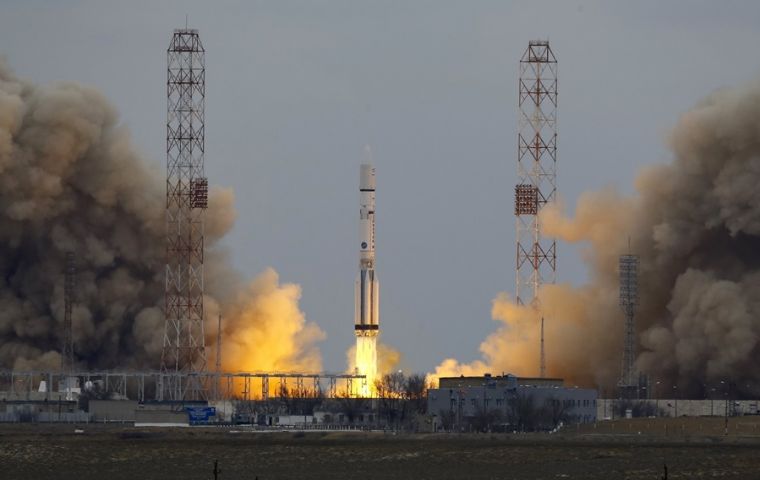Europe, Russia sending robotic spacecraft on mission to find signs of life on Mars

After the National Aeronautics and Space Administration (NASA) made a groundbreaking discovery of traces of liquid water on the surface of Mars last year, Europe and Russia are now stepping up their efforts to find signs of life on the Red Planet.
Earlier this week, a robotic spacecraft called Trace Gas Orbiter and a lander called Schiaparelli were sent to space as part of the two-phase ExoMars programme, a joint project between Europe and Russia to discover if life is indeed possible on Mars.
The spacecraft, which weighs 8,220 pounds, blasted off together on top of a Russian Proton-M rocket at the Baikonur Cosmodrome in Kazakhstan at 5:31 a.m. Monday, according to NBC News.
The Trace Gas Orbiter is scheduled to enter Mars' orbit on Oct. 19, or after seven months of journeying from Earth. After this, the spacecraft will eventually work its way to a circular orbit with an altitude of about 250 miles.
The robotic spacecraft is equipped with four different instruments to study the Martian surface and atmosphere—an undertaking that will last for five years.
As its name suggests, the Trace Gas Orbiter will primarily try to find traces of methane gas and its degradation products in Mars' atmosphere—the same gas that is produced by microbes and other living organisms here on Earth. It follows, therefore, that if the mission finds traces of methane gas on Mars, it will have found a possible sign of life.
It is, however, not a sure indication of life on another planet since geological processes can also generate methane. NASA's Mars Curiosity rover actually detected a 10-fold jump in levels of methane gas in the Red Planet in late 2013 and early 2014, but the cause of this spike has yet to be determined.
The robotic spacecraft will also take photos to help the ExoMars team choose a landing spot for the deep-drilling rover that will also be launched by Europe and Russia in 2018 as part of the second phase of the ExoMars programme, if current schedules hold.
The solar-powered orbiter will likewise serve as a communications link between this deep-drilling rover and Earth.











